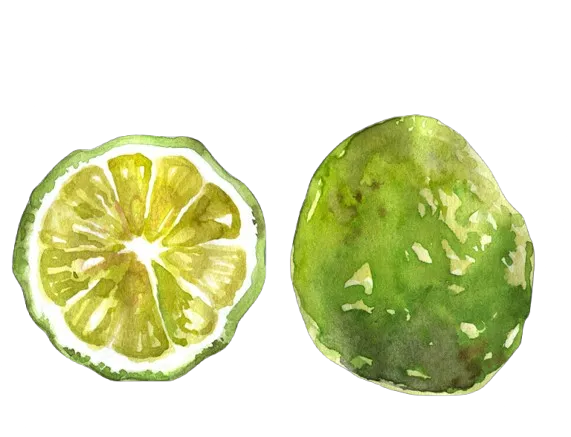Add Your Heading Text Here
Add Your Heading Text Here
Add Your Heading Text Here

Lavender
Origin Story: Native to the Mediterranean, lavender has been cherished for over 2,500 years. Ancient Egyptians used it in mummification and as a perfume. In Roman times, it symbolized cleanliness and was infused into baths and oils.
Historical Significance: Lavender was a prized herb in medieval Europe, often used to ward off evil spirits. It gained popularity for calming the mind and inducing sleep.
Modern Benefits: Lavender is known for its ability to reduce stress, improve sleep quality, and soothe the nervous system.
Featured In: Sereni Tea, Cleopatra.

Chamomile
• Origin Story: Chamomile has roots in ancient Egypt, where it was dedicated to the sun god Ra and used to treat fevers. The Greeks and Romans also valued it as a remedy for inflammation and indigestion.
• Historical Significance: In medieval Europe, chamomile was strewn on floors at gatherings to release its calming scent when walked upon.
• Modern Benefits: Chamomile helps with relaxation, promotes better sleep, and soothes the stomach.
• Featured In: Chamomile Tea, Cleopatra.
• Historical Significance: In medieval Europe, chamomile was strewn on floors at gatherings to release its calming scent when walked upon.
• Modern Benefits: Chamomile helps with relaxation, promotes better sleep, and soothes the stomach.
• Featured In: Chamomile Tea, Cleopatra.

Green Tea
• Origin Story: Originating in China over 5,000 years ago, green tea was first consumed as a medicinal drink during the reign of Emperor Shen Nong. It later became a staple in Japanese tea ceremonies.
• Historical Significance: In ancient China, it was believed that green tea could prolong life and enhance vitality. Buddhist monks used it to improve focus during meditation.
• Modern Benefits: Green tea is packed with antioxidants, boosts metabolism, and enhances mental alertness.
• Featured In: Green Tea, Detox Tea, Sereni Tea, Cleopatra.
• Historical Significance: In ancient China, it was believed that green tea could prolong life and enhance vitality. Buddhist monks used it to improve focus during meditation.
• Modern Benefits: Green tea is packed with antioxidants, boosts metabolism, and enhances mental alertness.
• Featured In: Green Tea, Detox Tea, Sereni Tea, Cleopatra.

Saffron
• Origin Story: Saffron is one of the oldest and most expensive spices, originating in ancient Persia (modern-day Iran) around 3,000 years ago. It was traded along the Silk Road and used by Cleopatra in her baths for beauty.
• Historical Significance: Saffron was believed to cure melancholy and bring about a sense of happiness. In Indian Ayurveda, it is a prized herb for enhancing skin radiance.
• Modern Benefits: Saffron supports mood regulation, promotes healthy skin, and acts as a powerful antioxidant.
• Featured In: Kahwa Saffron.
• Historical Significance: Saffron was believed to cure melancholy and bring about a sense of happiness. In Indian Ayurveda, it is a prized herb for enhancing skin radiance.
• Modern Benefits: Saffron supports mood regulation, promotes healthy skin, and acts as a powerful antioxidant.
• Featured In: Kahwa Saffron.

Cinnamon
• Origin Story: Cinnamon was first harvested in Sri Lanka and Southern India. Mentioned in ancient Chinese texts as early as 2,000 BCE, it was one of the most sought-after spices of the ancient world.
• Historical Significance: The Egyptians used cinnamon in their embalming rituals, while medieval physicians prescribed it for throat ailments.
• Modern Benefits: Cinnamon stabilizes blood sugar levels, reduces inflammation, and aids digestion.
• Featured In: Kahwa Saffron, Herbs and Petals, Masala Milk Tea.
• Historical Significance: The Egyptians used cinnamon in their embalming rituals, while medieval physicians prescribed it for throat ailments.
• Modern Benefits: Cinnamon stabilizes blood sugar levels, reduces inflammation, and aids digestion.
• Featured In: Kahwa Saffron, Herbs and Petals, Masala Milk Tea.

Clove
• Origin Story: Cloves are native to the Maluku Islands in Indonesia. They were so highly prized in ancient times that wars were fought over their trade during the spice rush of the 16th century.
• Historical Significance: In ancient China, cloves were chewed to freshen breath before meeting the emperor.
• Modern Benefits: Clove is rich in antioxidants, promotes oral health, and reduces inflammation.
• Featured In: Herbs and Petals, Masala Milk Tea, Kahwa Saffron.
• Historical Significance: In ancient China, cloves were chewed to freshen breath before meeting the emperor.
• Modern Benefits: Clove is rich in antioxidants, promotes oral health, and reduces inflammation.
• Featured In: Herbs and Petals, Masala Milk Tea, Kahwa Saffron.

Ginger
• Origin Story: Ginger has been cultivated in Southeast Asia for over 5,000 years. It was traded along the Maritime Silk Road and used in ancient Indian and Chinese medicine to treat various ailments.
• Historical Significance: Ginger was a staple in Ayurvedic medicine for improving digestion and boosting immunity. In medieval Europe, it was a luxury spice used in desserts.
• Modern Benefits: Ginger soothes nausea, reduces inflammation, and strengthens the immune system.
• Featured In: Detox Tea, Masala Milk Tea.
• Historical Significance: Ginger was a staple in Ayurvedic medicine for improving digestion and boosting immunity. In medieval Europe, it was a luxury spice used in desserts.
• Modern Benefits: Ginger soothes nausea, reduces inflammation, and strengthens the immune system.
• Featured In: Detox Tea, Masala Milk Tea.

Rose Petals
• Origin Story: The cultivation of roses dates back to 3,000 BCE in ancient Mesopotamia and Persia. Rose petals were a symbol of love and beauty in Greek and Roman mythology.
• Historical Significance: Cleopatra was said to have bathed in rose water to enhance her allure. Roses were also used in ancient Indian rituals as a symbol of divine purity.
• Modern Benefits: Rose petals promote emotional balance, soothe the skin, and enhance digestion.
• Featured In: Cleopatra, Kahwa Saffron.
• Historical Significance: Cleopatra was said to have bathed in rose water to enhance her allure. Roses were also used in ancient Indian rituals as a symbol of divine purity.
• Modern Benefits: Rose petals promote emotional balance, soothe the skin, and enhance digestion.
• Featured In: Cleopatra, Kahwa Saffron.

Hibiscus
• Origin Story: Hibiscus originated in North Africa and Southeast Asia. Ancient Egyptians consumed hibiscus tea to cool their bodies in the desert heat.
• Historical Significance: Known as “karkade” in Egypt, hibiscus has been used for centuries as a symbol of love and fertility.
• Modern Benefits: Hibiscus lowers blood pressure, supports liver health, and is high in antioxidants.
• Featured In: Herbs and Petals.
• Historical Significance: Known as “karkade” in Egypt, hibiscus has been used for centuries as a symbol of love and fertility.
• Modern Benefits: Hibiscus lowers blood pressure, supports liver health, and is high in antioxidants.
• Featured In: Herbs and Petals.

Tulsi
• Origin Story: Tulsi is indigenous to India and has been revered for over 3,000 years in Ayurvedic texts as “The Incomparable One.”
• Historical Significance: Tulsi leaves are considered sacred in Hindu rituals and are often placed in water to purify it.
• Modern Benefits: Tulsi boosts immunity, fights stress, and detoxifies the body.
• Featured In: Detox Tea.
• Historical Significance: Tulsi leaves are considered sacred in Hindu rituals and are often placed in water to purify it.
• Modern Benefits: Tulsi boosts immunity, fights stress, and detoxifies the body.
• Featured In: Detox Tea.

Star Anise
• Origin Story: Native to Southern China and Vietnam, star anise has been used since ancient times in Chinese medicine for its warming and digestive properties.
• Historical Significance: Star anise was introduced to Europe in the 16th century via the spice trade and became popular for flavouring baked goods and spirits.
• Modern Benefits: Star anise is antimicrobial, improves digestion, and soothes respiratory issues.
• Featured In: Kahwa Saffron, Masala Milk Tea.
• Historical Significance: Star anise was introduced to Europe in the 16th century via the spice trade and became popular for flavouring baked goods and spirits.
• Modern Benefits: Star anise is antimicrobial, improves digestion, and soothes respiratory issues.
• Featured In: Kahwa Saffron, Masala Milk Tea.

Cardamom
• Origin Story: Native to India, cardamom has been used for over 4,000 years. Ancient Indian texts like the Vedas describe its use in religious rituals and medicine.
• Historical Significance: Known as the “Queen of Spices,” cardamom was highly prized by the ancient Greeks and Romans for its aromatic properties.
• Modern Benefits: Cardamom aids digestion, reduces bad breath, and improves circulation.
• Featured In: Kahwa Saffron, Masala Milk Tea.
• Historical Significance: Known as the “Queen of Spices,” cardamom was highly prized by the ancient Greeks and Romans for its aromatic properties.
• Modern Benefits: Cardamom aids digestion, reduces bad breath, and improves circulation.
• Featured In: Kahwa Saffron, Masala Milk Tea.

Thyme
• Origin Story: Thyme is native to the Mediterranean region and has been used since ancient Egypt for embalming and healing wounds.
• Historical Significance: The Greeks associated thyme with courage and often burned it as an offering to their gods.
• Modern Benefits: Thyme supports respiratory health and strengthens immunity.
• Featured In: Mint Tea.
• Historical Significance: The Greeks associated thyme with courage and often burned it as an offering to their gods.
• Modern Benefits: Thyme supports respiratory health and strengthens immunity.
• Featured In: Mint Tea.

Liquorice
• Origin Story: liquorice has been cultivated in the Middle East and Europe for over 4,000 years. It was a staple in ancient Chinese and Egyptian medicine.
• Historical Significance: Pharaohs were buried with liquorice root to enjoy its benefits in the afterlife.
• Modern Benefits: liquorice soothes sore throats, reduces inflammation, and supports adrenal health.
• Featured In: Opera Tea.
• Historical Significance: Pharaohs were buried with liquorice root to enjoy its benefits in the afterlife.
• Modern Benefits: liquorice soothes sore throats, reduces inflammation, and supports adrenal health.
• Featured In: Opera Tea.

White Musli
• Origin Story: White Musli, native to India, has been prized in Ayurvedic medicine for over 2,000 years. Known as "Divya Aushadhi" (divine medicine), it was historically used to treat fatigue and enhance vitality.
• Historical Significance: Once a closely guarded secret of Indian herbalists, White Musli was considered a natural aphrodisiac and a remedy for boosting physical and mental strength. Kings and warriors consumed it for stamina and resilience.
• Modern Benefits: o Enhances energy and boosts stamina. o Improves muscle recovery and physical performance. o Known for its antioxidant and anti-inflammatory properties.
• Featured In: New York Tea.
• Historical Significance: Once a closely guarded secret of Indian herbalists, White Musli was considered a natural aphrodisiac and a remedy for boosting physical and mental strength. Kings and warriors consumed it for stamina and resilience.
• Modern Benefits: o Enhances energy and boosts stamina. o Improves muscle recovery and physical performance. o Known for its antioxidant and anti-inflammatory properties.
• Featured In: New York Tea.

Velvet Beans
• Origin Story: Velvet Beans are native to tropical regions of Asia and Africa. They have been cultivated for centuries in India and used in traditional Ayurvedic treatments to enhance mood and vitality.
• Historical Significance: Ancient Ayurvedic texts describe Velvet Beans as a "miracle bean" due to their dopamine-boosting properties, which help combat stress and anxiety. They were also believed to improve mental clarity and strength.
• Modern Benefits: o Supports brain health by increasing dopamine levels. o Reduces stress and enhances mood. o Promotes physical vitality and hormonal balance.
• Featured In: New York Tea.
• Historical Significance: Ancient Ayurvedic texts describe Velvet Beans as a "miracle bean" due to their dopamine-boosting properties, which help combat stress and anxiety. They were also believed to improve mental clarity and strength.
• Modern Benefits: o Supports brain health by increasing dopamine levels. o Reduces stress and enhances mood. o Promotes physical vitality and hormonal balance.
• Featured In: New York Tea.

Almond
• Origin Story: Almonds originated in the Middle East and were domesticated over 4,000 years ago. They spread along ancient trade routes, becoming a staple of diets across Europe, Asia, and North Africa.
• Historical Significance: Known as the "King of Nuts," almonds were highly valued by ancient civilizations like the Egyptians and Romans for their nutritional and medicinal properties. They symbolized prosperity and were often used in royal feasts.
• Modern Benefits: o Rich in Vitamin E and healthy fats, promoting skin and heart health. o Supports brain function and reduces cholesterol levels. • Featured In: Kahwa Saffron.
• Historical Significance: Known as the "King of Nuts," almonds were highly valued by ancient civilizations like the Egyptians and Romans for their nutritional and medicinal properties. They symbolized prosperity and were often used in royal feasts.
• Modern Benefits: o Rich in Vitamin E and healthy fats, promoting skin and heart health. o Supports brain function and reduces cholesterol levels. • Featured In: Kahwa Saffron.

Bergamot
• Origin Story: Bergamot is a citrus fruit native to Southern Italy. Its unique flavor and aroma have been cultivated since the 16th century. The essential oil extracted from its rind is famous for its therapeutic properties.
• Historical Significance: Bergamot became widely used in perfumery and early medicine. It was first infused into tea in the 19th century to create Earl Grey, a timeless classic.
• Modern Benefits:
o Reduces anxiety and promotes relaxation. o Supports digestive health and boosts immunity. • Featured In: Earl Grey Tea.
• Historical Significance: Bergamot became widely used in perfumery and early medicine. It was first infused into tea in the 19th century to create Earl Grey, a timeless classic.
• Modern Benefits:
o Reduces anxiety and promotes relaxation. o Supports digestive health and boosts immunity. • Featured In: Earl Grey Tea.

Nutmeg
• Origin Story: Nutmeg originates from the Banda Islands in Indonesia, where it was cultivated as early as 1,500 BCE. It was one of the most sought-after spices during the 16th-century spice trade.
• Historical Significance: Known for its warming properties, nutmeg was prized in ancient Indian and Arabic medicine to boost mood and enhance digestion.
• Modern Benefits:
o Improves sleep and relieves stress. o Aids digestion and has anti-inflammatory properties. • Featured In: Masala Milk Tea.
• Historical Significance: Known for its warming properties, nutmeg was prized in ancient Indian and Arabic medicine to boost mood and enhance digestion.
• Modern Benefits:
o Improves sleep and relieves stress. o Aids digestion and has anti-inflammatory properties. • Featured In: Masala Milk Tea.

Mace
• Origin Story: Mace is derived from the reddish outer covering of the nutmeg seed. Like nutmeg, it originates from Indonesia and was a key commodity in the spice trade.
• Historical Significance: Used in ancient Indian cooking and Ayurveda, mace was valued for its aromatic and medicinal qualities. It was believed to stimulate the appetite and improve circulation.
• Modern Benefits:
o Boosts digestion and metabolism. o Enhances immunity with its antimicrobial properties. • Featured In: Masala Milk Tea.
• Historical Significance: Used in ancient Indian cooking and Ayurveda, mace was valued for its aromatic and medicinal qualities. It was believed to stimulate the appetite and improve circulation.
• Modern Benefits:
o Boosts digestion and metabolism. o Enhances immunity with its antimicrobial properties. • Featured In: Masala Milk Tea.

Jasmine
• Origin Story: Jasmine originated in Persia and India and was introduced to China during the Tang Dynasty (618–907 CE). It has been a key ingredient in perfumes and teas for centuries.
• Historical Significance: Known as the “Queen of the Night,” jasmine flowers were a symbol of love and purity in Indian and Arabic cultures.
• Modern Benefits:
o Reduces stress and enhances mood. o Rich in antioxidants, supporting heart health. • Featured In: Cleopatra Tea.
• Historical Significance: Known as the “Queen of the Night,” jasmine flowers were a symbol of love and purity in Indian and Arabic cultures.
• Modern Benefits:
o Reduces stress and enhances mood. o Rich in antioxidants, supporting heart health. • Featured In: Cleopatra Tea.

Sarsaparilla
Origin Story
Sarsaparilla, derived from the roots of the Smilax vine, originates in the tropical regions of Central and South America and the Caribbean. Indigenous peoples such as the Aztecs and Mayans first harnessed its medicinal properties, using it to treat skin conditions, joint pain, and digestive issues. The name itself is rooted in Spanish: zarza (bramble) and parilla(small vine), reflecting the plant’s appearance. During the 16th century, sarsaparilla was introduced to Europe, where it gained prominence as a powerful herbal remedy.
Nirvana’s Black Tea, where the bold malty flavour of black tea is elevated by the rich, herbal notes of sarsaparilla, creating a blend that is both energizing and restorative.
Sarsaparilla, derived from the roots of the Smilax vine, originates in the tropical regions of Central and South America and the Caribbean. Indigenous peoples such as the Aztecs and Mayans first harnessed its medicinal properties, using it to treat skin conditions, joint pain, and digestive issues. The name itself is rooted in Spanish: zarza (bramble) and parilla(small vine), reflecting the plant’s appearance. During the 16th century, sarsaparilla was introduced to Europe, where it gained prominence as a powerful herbal remedy.
Nirvana’s Black Tea, where the bold malty flavour of black tea is elevated by the rich, herbal notes of sarsaparilla, creating a blend that is both energizing and restorative.

